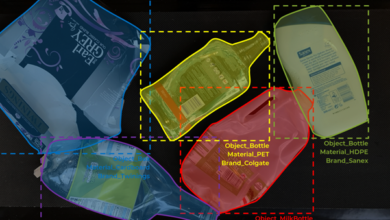
Artificial intelligence (AI) and analytics have an answer for some of the biggest questions being raised in enterprise networking. For five years or more, the hype around 5G networks has been steadily building. Mobile Network Operators (MNOs), network service providers, enterprises, and end users all bought into the transformative effect of 5G as an enabler for new revenue, service innovation, and digital experiences. Like so many emerging technologies, it has taken longer than anticipated for 5G to deliver on its promise.
Over the last 12 months, 5G has reached its peak of inflated expectations and begun its descent into the trough of disillusionment, according to Gartner’s Hype Cycle for Enterprise Networking, 2023. MNOs and service providers are looking at how they can capture the revenue potential of 5G and monetise their infrastructure investments, while enterprises look for ways to innovate using 5G and create new value in their businesses. These are multi-billion-dollar questions that have to be answered before the industry can even begin to set its sights on a 6G future.
So as the potential for 5G is recalibrated, what is it going to take for the industry to deliver on the promise of 5G and reach the plateau of productivity? The answer is AI and cellular intelligence.
5G’s Future is in B2B
GSMA Intelligence (GSMAi) estimates that 5G connections will represent over half of mobile connections by 2029, rising to 56% by the end of the decade. The same study found that 5G had 1.6 billion connections at the end of 2023, growing to 5.5 billion by 2030.
The challenge is to turn these massive investments and rollouts into new value across the mobile ecosystem, and this will be driven largely by B2B use cases, rather than B2C. Limited performance or “weak signal” in a single location can be tolerated by consumers and is generally not a driver for changing providers. It is, however, a barrier to delivering the mission-critical applications and services that enterprises want. This in turn limits service provider monetization strategies.
Today, service providers and enterprises need visibility into 5G performance on a granular street-by-street and site-by-site basis. They need accurate, comparative, and real-world data presented in a way that is easy to consume and use in decision-making. Otherwise, they cannot go beyond ‘best effort’ services and optimize their network strategies to deliver enterprise-grade performance.
There is no Google Street View for cellular performance, which means enterprises and service providers do not have access to precision performance data at scale. At the same time, crowdsourced performance testing is not enterprise-grade, strategically focused, or fit to deliver enterprise outcomes.
If you can’t measure it, you can’t optimise it
The opportunity is in combining precision-performance testing with AI to predict network performance, based on millions of data points in radio frequency environments. AI has a role to play in driving efficiency in data capture while making logical predictions about how a network will perform at a given location.
Enterprise-grade testing technologies can be deployed on vehicles or in backpacks like Google has done with Street View cameras, then routed using AI to maximize data density and reduce carbon footprint. Using AI means that every single street or location doesn’t need to be tested to achieve the data density required for predictive analytics. A/B testing of routing enables data capture to scale, move with greater speed, and reduce environmental impact.
The bespoke testing equipment can then upload test results to a central database in real time. This provides an immediate snapshot of actual performance across 5G and other network technologies in a precise location.
The data continually trains AI algorithms that are used to predict local network performance across a global footprint. The characteristics of the radio frequency environment are analyzed and presented as visual “clusters” of the areas that are detected, to behave consistently. Clusters show a combination of observed and predicted performance of a network, down to a street address or enterprise location.
Operator-agnostic testing enables enterprises and service providers to compare network performance across locations, providers, and cellular technologies, to then use as a benchmark. The resulting MNO rankings provide instant access to the best provider based on priority KPIs. Enterprises can select the best provider to enable their application and services at a specific location while service providers can immediately see how they stack up against the competition.
Promises Delivered
The result is new visibility and control over 5G networking that enables innovations to be developed, deployed, and monetized. AI and cellular intelligence can be used to deliver consistent network performance which is critical for B2B use cases.
When an enterprise or service provider can see and predict network performance at a granular level, they can have a foundation for enabling smart city applications, autonomous vehicles, IoT, Fixed Wireless Access, and a whole range of rich and high-value applications and services. 5G becomes an efficient and essential enabler for vertical-specific solutions and a driver for monetization of network assets.
AI and cellular intelligence move 5G beyond the hype and enable it to reach the plateau of productivity, supporting disruptive solutions that deliver new revenue opportunities.





